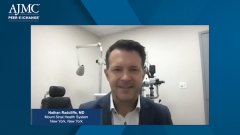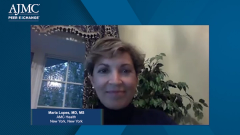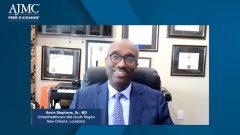
Glaucoma Risk Factors and Screening
Shared insight on factors that put patients at risk for glaucoma and how screening can improve early diagnosis and care.
Episodes in this series

Transcript:
Neil Minkoff, MD: That raises a couple of questions in my mind. But I guess 2 questions, and maybe I’ll ask Dr Pickering to join in here, would be what are the patients that you look for that you think are high risk or the ones that need more attention, and what should the approach be in terms of basic screening? Because, based on what Dr Radcliffe said, we’re getting these patients in when their vision is already blurry. They’ve already lost, I think you said, half of their fibers. What should we be doing to identify high-risk patients or screen them better?
Terri-Diann Pickering, MD: There are many risk factors like Dr Radcliffe said. The big one is age, any patient over 65 or 70, but in particular I look at any African American over 40, any Hispanic patient over 60. Additional, family history is important especially if there’s an affected sibling, thin corneas. Anyone who has any sort of chronic eye inflammation or chronic steroid use, any trauma to the eyes, or patients who are very nearsighted or very farsighted. These are the patients I look out for and want to screen. We do a full medical and family history screening.
We take a full history of steroid use past and present, and then we do a complete exam and do all the full detailed glaucoma tests, especially paying attention to detailed exam of the optic nerve, looking at the angle of the eye, visual fields, optic nerve thickness scans, corneal thickness, and optic nerve photos.
Prevention is challenging because a lot of the risk factors are hereditary or age related, there’s not much an individual can do. But we do hope that in general the public avoids eye trauma and chronic steroid use unless it’s absolutely necessary. But most important is early detection.
Neil Minkoff, MD: Let’s pull a little bit towards the role of the aggregator. One of the things that payers have the advantage of is seeing claims data and having a rich set of information on the patients who are going through them. I’ll ask Dr Lopes, what if anything is being done to outreach to patients who either have glaucoma or you feel might be at risk for glaucoma?
Maria Lopes, MD, MS: To think about predictive analytics because, as others have pointed out, age is a predictor but also steroid use. Payors have a lot of medical, pharmacy utilization. Family history may not be readily available for a payor, but certainly pharmacy data is available, at least for the longevity of the patient within that health plan. Certainly, other comorbidities, including diabetes become risk factors for referral to an ophthalmologist or a clinician for an annual eye exam, especially if you have diabetes that hits other quality measures. HEDIS [Health Care Effectiveness Data and Information Set] and Star measures are usually incredibly important to health plans.
Usually there are no barriers to access in terms of a referral to an ophthalmologist or an optometrist, and with risk factors, including age, Medicare obviously covers an annual eye exam for glaucoma screening. And usually, payors also follow US [United States] Preventative [Services] Task Force. In this case, the screening is just more focused on high-risk patients. It’s important that awareness, both at the patient level, member level, becomes important as well as the PCP [primary care physician] that then leads to the appropriate referral and screening. Because early matters if we’re going to make an impact on the second leading cause of blindness.
Neil Minkoff, MD: Let me pull it back to you, Dr Radcliffe as a specialist and expert. I want to touch on something that Dr Lopes just said which is the role of the primary care physician and referring the patient and where do you see the potential improvement in that. Speak frankly. As a primary care physician, I can take it.
Nathan Radcliffe, MD: Well, it’s a critical role. One thing that’s clear to me is that you never know what’s going to be happening inside of someone’s eyes until you exam them. I can’t tell you how many patients come in for one reason and you find something important on exam, and that’s just the value of the exam. It’s the value of optometric evaluations and quality optometric evaluations and the triage process we have. Though electronic medical records can be very helpful in terms of identifying those obvious risk factors. There’s no reason a modern record could not recognize that in someone who is over 40, if they have discrete variables on race or family history of glaucoma, you can have very simple tools that would alert a physician to make sure eye exams are happening and things along those lines. I recognize that many people don’t know what glaucoma is, certainly in the general lay population, but to a lesser extent other physicians are busy worrying about other things. I know glaucoma is not top of mind, but we have technology that should be able to help us generate these appropriate referrals.
Transcript edited for clarity.
Newsletter
Stay ahead of policy, cost, and value—subscribe to AJMC for expert insights at the intersection of clinical care and health economics.

















































